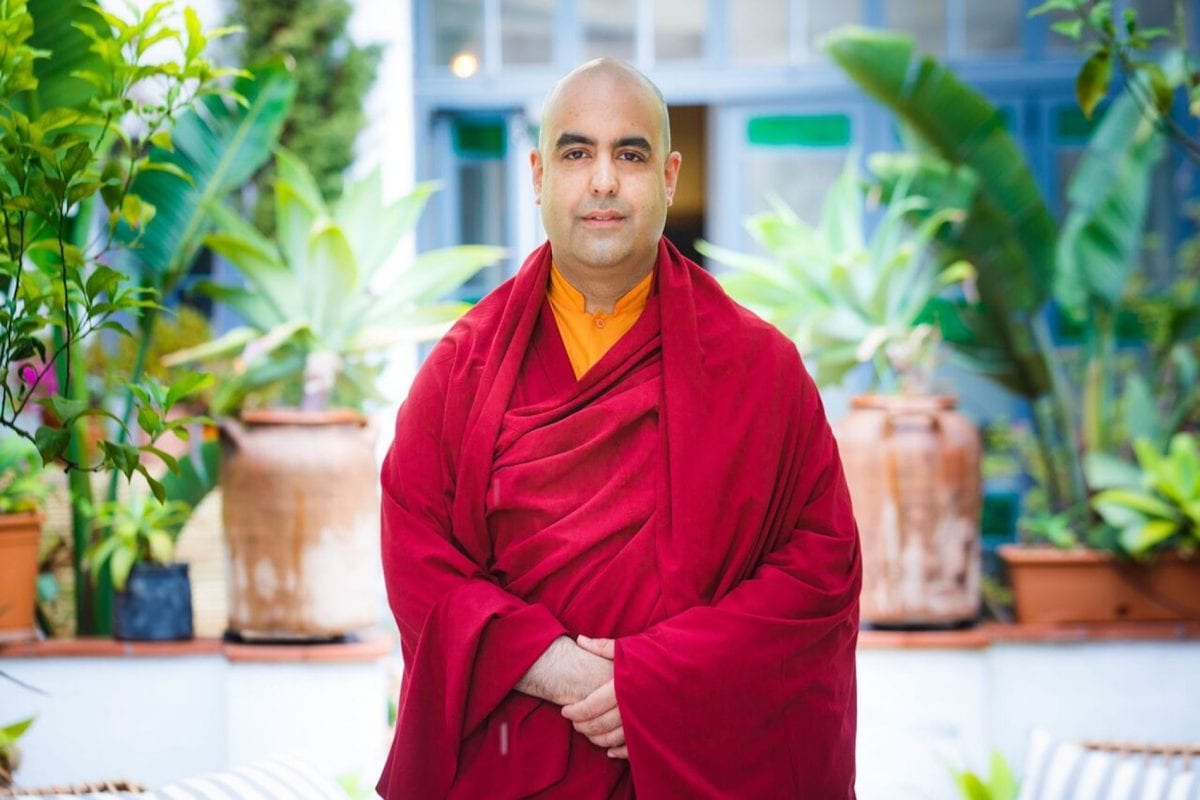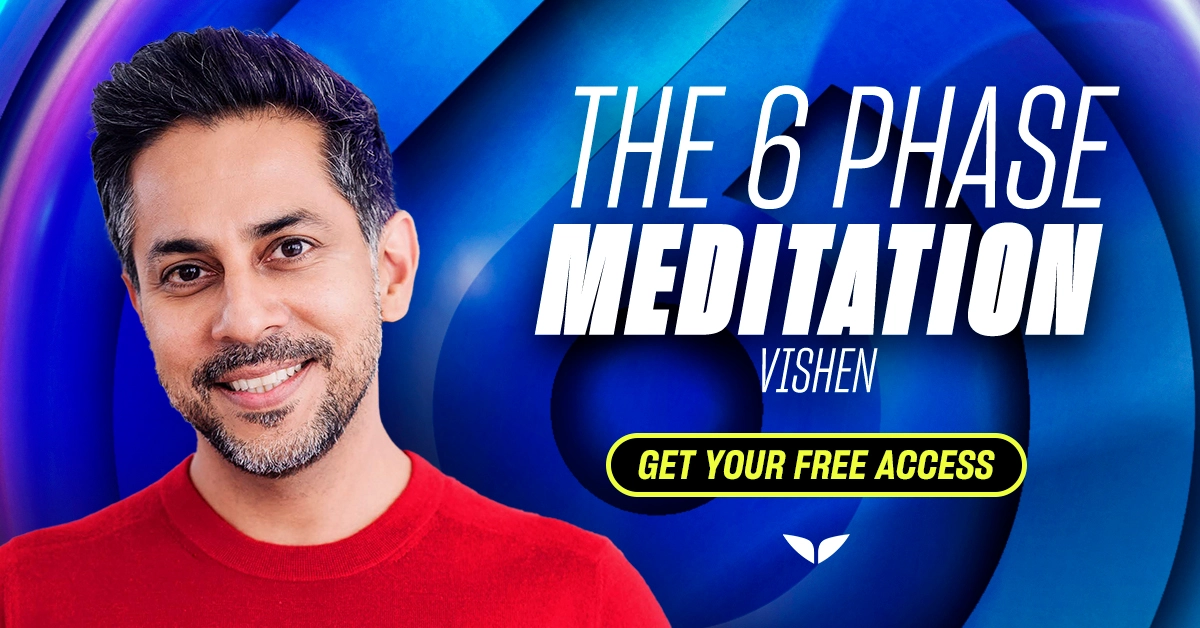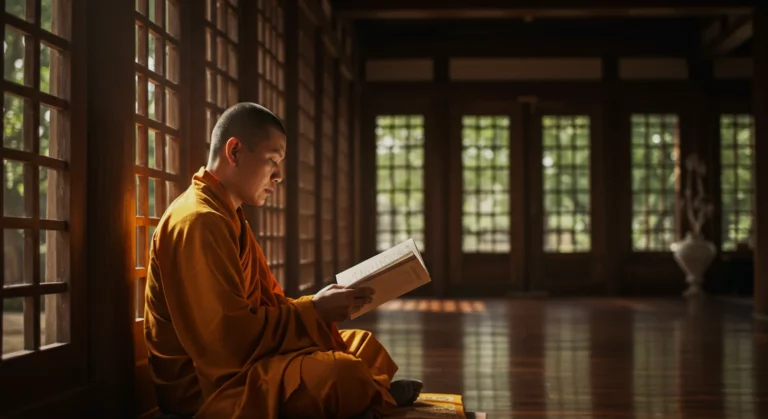Have you ever felt frustrated after a meditation session?
If so, you’re not alone. It’s a common occurrence. We sit down hoping to gain clarity and peace of mind and wind up frustrated, disappointed, and more stressed out than when we began.
In this groundbreaking episode of the Mindvalley podcast, Vishen, founder and CEO of Mindvalley sits down with Buddhist monk, Gelong Thubten, to better understand why this happens.
What is it we’re doing wrong when it comes to meditation? How can we alter our approach for more successful practice?
How can the practice of compassion meditation help us reconnect with ourselves?
Discover how the intention of compassion can amplify your meditation practice with Gelong Thubten, the monk who helped train Doctor Strange.
Why Do We Struggle With Meditation?
At age 21, Gelong Thubten spent four years in complete isolation on a remote Scottish Island to become a Buddhist Monk. He spent four years in silence as he honed his meditation practice and dove deep into the human psyche.

He’s well known today as the monk who helped prepare Benedict Cumberbatch for his role as Doctor Strange. And today, he shares his practices and philosophies with audiences around the world.
In this episode of the Mindvalley podcast, Vishen sat down with Thubten to learn more about how to overcome the core struggles of meditation practice.
Why do we struggle so much with meditation? According to Thubten, it has everything to do with our expectations.
“Meditation has nothing to do with clearing the mind,” explains Thubten. “It isn’t about switching off – it’s about switching on. It’s about waking up.”
Many people approach their meditation practice with the expectation of experiencing bliss. That’s what meditation is for, isn’t it?
But Thubten urges us to recognize that meditation is about waking up, not switching off.
Instead of turning off our thoughts, we must work to tune into them.
How We Create Self-Imposed Lack
If you are seeking an experience or feeling through meditation, then fail to receive it, you’re going to be disappointed. And it’s in this way that we’re setting ourselves up for failure.
We’re creating a self-imposed deficiency in the mind.
A lot of people work to clear their minds and shut off their thoughts when they meditate. But this is impossible. The mind is never empty or vacant, even when we’re asleep.
We can no more shut off our minds than we can willingly drop unconscious.
Thubten emphasizes that when we’re searching for a particular experience, we’re telling ourselves that we don’t have it. That in some way, the experience we’re in just isn’t good enough, the present moment isn’t good enough, we’re not good enough.
In a way, the expectations we form around meditation are entirely natural. Many turn to meditation as a way to help deal with uncomfortable thoughts, emotions, and physical sensations in the body.
Our discomfort drives us to try and flee to a better, more comfortable state. And we tend to view meditation as that escape.
This is what catches us in the trap of self-imposed lack.
The good news is that there is a way out of the trap.
And it’s through the practice of compassionate meditation.
How To Avoid Getting Caught Up With Thoughts
Thubten uses the metaphor of the clouds in the sky to explain our relationship with thought.
When you’re flying in an airplane and the airplane starts to descend for landing, do you look at the approaching clouds and think:
Oh no! The plane is headed straight for those clouds! We’re going to crash into them!
No, because we know the plane will pass effortlessly through the clouds to reach the ground below.
Now, imagine that the sky is your mind, the clouds are your thoughts, and the plane is your awareness—the tool you use to interact with your thoughts.
You can use your awareness to recognize the presence of the thoughts, but you don’t need to get involved with them.
You can’t stop the clouds. They are a natural expression of the sky. But you can observe them, pass through them, and watch as they come and go.
How To Use Compassion Meditation To Improve Your Practice
How you relate to your own discomfort is key.
— Gelong Thubten
Thoughts, emotions, and especially pain, are powerful catalysts in our practice if we can learn how to work with them instead of against them.
This is where compassion meditation comes into play.
We don’t need to try and remove thoughts, block them, or chase them. Observe that they are there. Understand that they are a natural expression of the mind. And do your best to simply sit with them in open awareness.

We make an enemy of our painful experiences and push them away. But Thubten encourages us to view these difficult experiences as opportunities to strengthen our practice.
Thubten encourages us to melt into these difficult feelings instead of trying to push them away. If we can learn to relate to these feelings with greater empathy, we can delve into a more compassionate meditation practice.
We tend to view any distraction that arises during meditation as a failure. But Thubten says we must try to view these distractions as a form of success. Any distraction is an opportunity to return to the present moment.
Relating to these distracting thoughts and feelings with non-judgment is compassion. It’s self-acceptance, it’s self-forgiveness. It’s compassion at the core.
You can’t extend compassion to others until you can be compassionate with your own mind.
This feeling of open non-judgment can easily transition into greater empathy, compassion, and even love.
Thubten explains that when we sit to meditate, we’re often reaching towards aggression. How? By trying to eradicate thought.
Trying to empty your mind is like annihilation, a type of aggression verging on violence, explains Thubten. Only by resolving that internal conflict can you become a more compassionate person, both internally and externally.
This is the root of self-acceptance and true compassion. You can form a friendship with your thoughts and emotions and meet them as guides instead of villains. And in this way, a compassionate meditation practice is born.
How To Practice Compassion Meditation In Your Daily Life
We often associate meditation with the formal practice: sitting down with our eyes closed to focus on our breath.
And this is a fantastic way to build a meditation practice. But we can also learn to practice meditation in our daily lives.
Thubten suggests that the small fleeting moments of discomfort we experience in our day to day are opportunities for compassion.
When we’re stuck in traffic, waiting in a queue, or frustrated when our phone or computer slows down – these are all opportunities for compassion.
Instead of pushing away the uncomfortable experience, try meeting that experience in the moment without judgment or anger.
“Just meet it with awareness,” says Thubten. “Trying to make it go away is a form of aggression.”
Practice compassion by allowing the frustration, sadness, or anger to exist in the moment with you. Try to simply be with it, without judgment, without pushing it away.
In this way, we’re actively choosing compassion. And we can learn to extend that practice to our formal meditation too.
The next time you sit to formally meditate, make an intention before you begin:
“I dedicate this meditation to all beings.”
All beings include you, so you also benefit from the practice! But you’re also extending the practice outside yourself to encompass others.
Treat everything with conscious awareness. Be compassionate, and make friends with yourself as you are, in the present moment.
If you are trying to push yourself into a state of joy, then you’re actually focusing on the absence of joy. But if you meet yourself as you are, in the present moment, with self-acceptance and empathy, your practice can extend to all avenues of your daily life.







